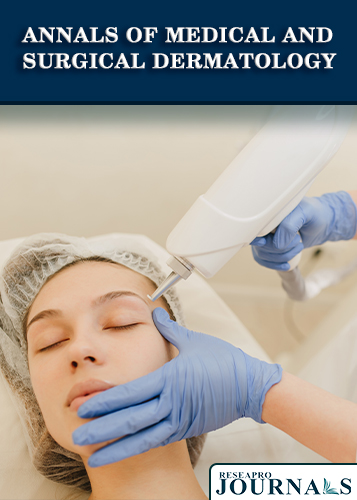
Annals of Medical and Surgical Dermatology
OPEN ACCESS

OPEN ACCESS

1Department of Dermatology and Venereology, University Hospital Centre Zagreb, Croatia
2Department of Infectious Diseases and Dermatovenereology, University Hospital Centre Zagreb, Croatia
3Department of Dermatology, University of Naples Federico II, Italy
Skin infections remain a significant public health concern, with bacterial, fungal, and viral pathogens causing a range of dermatological conditions. This review explores the most common bacterial skin infections, including impetigo, cellulitis, and folliculitis, caused primarily by Staphylococcus aureus and Streptococcus pyogenes, and their treatment with antibiotics. Fungal infections, similar as tinea corporis, candidiasis, and seborrheic dermatitis, are bandied, pressing the part of dermatophytes, Candida species, and Malassezia in their pathogenesis and operation with antifungal curatives. Viral skin infections, including herpes simplex contagion (HSV), varicella- zoster contagion (VZV), and mortal papillomavirus (HPV), are also examined, with an emphasis on antiviral treatments and the part of vaccines. The review also addresses ultramodern challenges in the opinion and treatment of these infections, particularly the rise of antimicrobial resistance, and underscores the significance of early intervention and substantiated treatment approaches. Understanding these infections is critical for effective operation in the contemporary clinical setting.
1Department of Dermatology and Venereology, University Hospital Centre Zagreb, Croatia
2Department of Infectious Diseases and Dermatovenereology, University Hospital Centre Zagreb, Croatia
3Department of Dermatology, University of Naples Federico II, Italy